Automation Training Zone
Article Index
Automation Training Zone
01-03 December 2016, Mumbai

In partnership with Hanover Milano Fairs India Pvt. Ltd. AIA set up an exclusive Zone during WIN India 2016 at MMRDA Grounds, Mumbai with an ultimate objective of training PEOPLE in advanced technologies to make them competent in solving operational issues and contribute to the superior performance and real-time management of plant, machinery and associated resources.
Automation Training Zone Highlights
- Participants were engaged with domain captains, drawn from leading member companies of Automation Industry Association
- Exposed and familiarized young, as well as experienced engineers, to the emerging skill needs in automated plant
- 8 Important Skills in Automation for Integrated Operations were covered
- Confidence building for implementation, with individual Hands-On training
| About the Knowledge Partner-AIA | Technology Partners |
|
|
Participants Profile
Staff from Maintenance / Projects / Utilities / Safety / Machine Design / Production Systems Design / Quality Management - participated in the training in their chosen domains and conducted specific mini-experiments with their own hands.
At every training booth, there were industry-standard, hardware and software components, configured for demonstration of the concept and the participant exercises.
Zone Highlights
Zone Highlights
Automation System Engineering
The key to successful deployment of automation lies in the ability of technical teams to deal with the interplay of several parts; such as Sensors, PLCs, DCS, Control panels, HMI, Robotics, DCS, SCADA, Motors, Pneumatics, Hydraulics, MCCs, Motion control, Data collection, Vision, besides other technical skills related to programming, planning, documentation, erection and commissioning.

Attendees' profile
Electrical / Mechanical / Electronic / Instrumentation Engineers / Diploma holders with minimum 2 years of hands on experience in Automation Design, Equipment Maintenance and Project Engineering attended.
Equipment presented for hands-on / demo
Sensors, Controllers, HMI, Motion & Pneumatic Actuators integrated to realize close loop automation & associated exercises.
Participants received following benefits
- Exposure to holistic solutions, system integration and standards of acceptance. Best practices not only raise the bar for accountability across the integrator community, they safeguard the user industry as a whole.
- Demos and application of contemporary software tools relevant to Automation projects
- Hands-on exercises of their choice
Lead Facilitator

Niraj Godbole
- Mr. Godbole has completed his Bachelors’ Degree in Electronics Engineering from Nagpur University.
- He has worked with various Industrial Automation Giants with a wide experience of more than a decade in this domain.
- He started as a Maintenance Engineer followed by serving in variety of profiles such as Maintenance , Engineering Design, Sales and Marketing as well as in the field of Business Development.
- Currently, he is working with Siemens Ltd. as a Product Manager for Mid Range Factory Automation products.
Zone Highlights
Energy Management
‘Energy management’ term has a number of meanings, but we're mainly concerned with the process of monitoring, controlling, and conserving energy in a production facility or building.
To manage the energy, first we need to monitor the energy and record it continuously and further analyze. Manual monitoring does not help since the sampling rate is very low and does not record sudden changes and peak requirements. So we need a data acquisition system (DAQ) which will gather the data centrally and be interfaced to all the individual units which need automated monitoring or control.
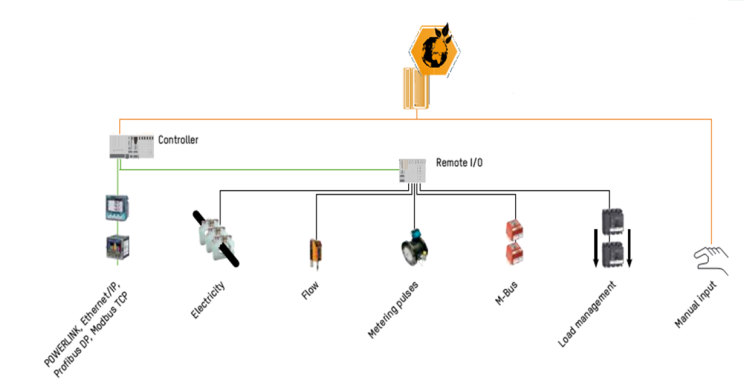
Attendees' profile
Team members with minimum one year experience in handling different equipment’s, machines and analyzing energy costs in the Industry from maintenance, utility and design department attended the session.
Equipment’s presented for hands-on / demo
Demo lab set up at show, consisted of complete setup of DCS based solution, including DAQ for energy management, interfaced with live equipment’s as load samples for recording and analyzing data.
Participants received following benefits
- Access to White Papers and Case Studies
- Insight into energy management cycles, associated equipment and solutions
- Hands-on exercise for recording and analyzing energy and cost data.
- Optional hands-on exercise for automatic load shedding
Lead Facilitator

Nikhil Katiyar
- Mr Katiyar is B.Tech in Electronics & Instrumentation from UP Technical University.
- He started working in Process Industry, as an Instrumentation Engineer and has executed projects in Oil & Gas Industry.
- He is currently Working as Application Engineer in Business Unit - Process & Factory Automation at B&R Industrial Automation Pvt. Ltd.
Zone Highlights
Industrial Networking
Manufacturers today realise the “value” locked in the data generated during manufacturing process and are investing in network infrastructure to have Continuous, Safe, Reliable and Real-time access to this data.
Manufacturers are adopting smart technologies as enablers to achieve their objectives of increasing productivity and reduce operational costs.
While technology adoption is one key part of this growth Engine, the other part required to keep the Engine moving is – SKILLED MANPOWER – who understand available Network technologies, network design, isolation, redundancy, security and can operate and maintain systems as they modernise and expand.

Attendees' profile
Maintenance engineers with minimum one year experience in handling smart networkable machines and responsible for Industrial Networking also other Roles such as Network Design Manager, IT Network Professional (Involved in automation integration), Corporate Group technical leads attended the session.
Equipment presented for hands-on / demo
Demo cum exercise station set-up for Industrial Ethernet training, consisted of PLC, VFD, HMI – on a network.
Participants received following benefits
- Gain a holistic, 360 degree view on Industrial Ethernet networks
- Overview of design guidelines and topoligies
- Step by step demo on implementing handshaking over Industrial Ethernet
- Optional hands-on exercise for adding new devices on the network.
Lead Facilitator

Vishwesh Anantharaman
- Mr. Anantharaman is Bachelor of Engineering in Electronics & Telecommunications from University of Mumbai & Masters in Engineering Management from Vishweshwariah Technological University, Karnataka.
- He has 18 years of experience in the field of Industrial Automation. Passionate about building machines with High performance, leveraging the best in class technologies available. Increasingly involved in building Smart Machines, utilizing the power of networks to act as an Enabler for driving convergence between manufacturing and IT.
- He is currently Global OEM Technical Consultant – Lead, at Rockwell Automation India (P) Ltd, working with OEMs to adopt new generation technology to deliver value in their products.
Zone Highlights
Integrated Robotics
Many manufacturers have turned to robotics integration to rethink their assembly and packaging processes to increase efficiency, productivity and quality control. Robots have experienced considerable cost reduction in the recent past, and they provide benefits of high speed, flexibility, precision and endurance. By robotically automating one or more elements of the assembly or packaging line and integrating , manufacturers can increase productivity and OEE while enjoying a low total cost of operation (TCO) and quick return on investment (ROI).
Typical applications for manufacturing include welding, assembly, pick & place, packaging, palletizing, inspection, and testing.
Lately there has been a convergence of vision with robotics – cameras are increasingly becoming the eyes of the robots so that they can be used to do complex tasks such as object tracking-identification-segregation. Vision Guided Robotics are being used in the industrial domain as it gives them more power than the proximity sensors and other sensors that helped the robots in not being blind in their various operations. Vision is being deployed in service robots and autonomous robots that are being used to fetch –carry and dispense raw materials at various production locations in the factory. Reversely robots are being integrated with vision systems for faster and accurate handling of the items to be inspected – helping one camera take images at different faces and angles of the objects being inspected that eliminates the need for multiple cameras; also for ensuring perfect positioning and alignment of the industrial camera vis-a-vis the various faces of the component to be inspected.
Robots integrated with vision are being increasingly used for track and trace in pharma industry – for automotive parts inspection for gauging / missing operation – packaging industry for completeness – FMCG and F&B industry for verification of shape size, quality and quantity while packaging. Robotic palletizing/depalletizing systems offer a smaller footprint and greater precision than conventional case packers, allowing these systems to address end-of-line needs for flexibility and versatility.

Attendees' profile
Team members with basic knowledge of Industrial robotics of manufacturing facility and automation technologies attended the session.
Equipment’s presented for hands-on / demo
Demo lab set-up at show, consisted of complete setup of Industrial robot interfaced with vision camera and a gripper for handling parts.
Participants received following benefits
- Insight into Industry 4.0 and role of Industrial robots in industry 4.0
- Hands-on exercise for Jogging industrial robot.
- Optional hands-on exercise for executing robot program on pendant
Lead Facilitator

Ravi Teja Tangella
- Mr Teja is B Tech in Electrical & Electronics Engg from JNTU University.
- He started working in automation Industry,as Service Engineer completed projects in Automotive, Metal Industry, Packaging Industry, and Special Machines.
- He is currently working as Trainer (Handling Customers National wide) at KUKA Robotics (I) Pvt. Ltd
Zone Highlights
Machinery Safety
Because safety at workplace cannot be left to chance:
Any machine consists of several moving parts which can potentially pose risk at workplace. The risks can be electrical, mechanical, pneumatic, hydraulic, thermal etc.
Negligence of safety at workplace can cause serious injuries to employee operating, servicing or maintaining the machinery. In order to ensure safety at workplace, there are many machinery safety standards like EN ISO 13849, ISO 62061 which need to be followed.

Attendees' profile
Current and aspiring EHS officers, Automation, Electrical, Maintenance and Project Design Engineers/Managers conversant with fundamentals of machinery safety attended the session.
Equipment presented for hands-on / demo
Demo cum exercise station set up at show, consisted of safety functions like gate monitoring and position monitoring safety sensors, emergency stop, safety PLC and diagnostic terminal for alarm reporting and diagnosis.
Participants received following benefits
- Knowledge to Machinery Safety Standards, Risk Assessment Charts, White Papers and Case Studies
- Comprehend key parameters of machinery safety such as Performance Level and Safety Integrity Level.
- Knowledge of the applications and best standard practice to your machine design.
- Hands-on exercises on different safety functionalities.
Lead Facilitator

Amol Bari
- Mr. Amol Bari has completed his Engineering Diploma & Bachelor's Degree in Electronics & Telecommunication from Pune University .
- As professional qualification, he is a Certified Machinery Safety Expert ' from TUV Nord & Pilz
- He has worked with Automation companies & has vast experience of more than 18 years in the field of Automation specific to Motion control & Safety Automation
- He started his career as an Application Engineer followed by various positions such as Application Manager, Product Manager & Sales in the field of business development.
- Currently, he is working with Pilz India Pvt Ltd as a Manager- Product Management & Engineering Services
Zone Highlights
Precision Motion Control
Motion control often involves twin demands of increasing speed and precision. As speed impacts productivity, it is an area of much interest. Improvement of the machine efficiency generates immeasurable added value, including reduction of labour and the machine floor area for the same quantity of production. But, when machine speed increases, a problem with the stop precision is often generated. In order to resolve this challenge, diversified grades of position controllers have been developed and used. It is easy to visualize through the difference of accuracy offered by positioning using Induction motor with limit switch controlled and same as using AC drives with highly sophisticated Motion Controllers.
In modern machines, AC servo systems with features like synchronization with multiple moving axes – rotary or linear, electronic CAM and on the fly CAM generation, deliver low footprint compared to delivery capacity, maximum positioning accuracy like 10-4 degree of rotation, advanced control methodology like auto-tuning, vibration adaptive filters etc. They are the emerging actuation systems for optimum productivity for today’s manufacturing.

This training module covers basics of AC servo, positioning feedback element likes Encoders, homing methods, selection of AC Servo and Controller, identification of elements of servo systems, and interfacing with controller and HMI. It also includes hands on practice of different positioning instructions, synchronous control, CAM creation and implementation using training cum demo setups.
Attendees' profile
Team members with minimum one year of experience in handling industrial equipment with knowledge of PLC system, programming of PLC and basic knowledge of servo system from System Integrators of Factory Automation and project engineer, OEM from Automotive, Metal, F&B, FMCG, Pharma, Packaging, Plastic, Textile, and technical personnel responsible for system design, selection of servo system and engineering attended the session.
Equipment presented for Hands-on /Demo
Demo cum exercise station set-up at show, consisted of latest Servo Systems (Drives & Servo Motor), Servo Controller and PLC.
Participants received following benefits
- Understanding the needs of AC Servo & terminology
- Overview of AC Servo Control system elements and its interfacing
- Components of Positioning profiles and correlation to applications.
- Electronic CAM, different types, configuration and implementation
Lead Facilitator
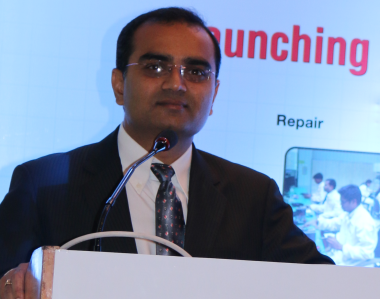
- Mr. Rameshchandra Bhorania holds Master’s Degree (Systems & Control) from IIT, Mumbai.
- He has total experience of 19 years in the field of Automation includes maintenance, projects and training.
- Presently he is working with Mitsubishi Electric India, as Assistant General Manager – FA Training, responsible for FA product training, educational collaboration activity and also takes care of Technical support for CLPA to promote the CC link network in India.
Zone Highlights
Process Simulation
Process simulation and effectiveness of Process Control Systems is part of standard engineering practice when a process engineer wants to evaluate performance of control system before testing on the actual equipment. This is especially needed in cases of-
- Hazardous processes where process engineer has to do a prior risk analysis
- Processes involving expensive raw materials
- Processes performed with high cost equipment
- Fine tuning of the process control algorithm
The basic idea of this simulation model is to use standard PLC with HMI software and a scripting or programing done generating inputs to control system according to various extreme conditions of process and check response of the control system to the same. The control system logic can be tuned till process engineer is satisfied and all possible conditions are responded by control system such that losses can be prevented.

Attendees' profile
Instrumentation/electronics/chemical engineers with 2-4 years’ experience in maintenance, design & programming of process industry applications attended the session.
Equipment’s presented for hands-on / demo
- Current/voltage source
- Operator station with SCADA software
- PLC
Participants received following benefits
- Process Owners get access to visualization of control system and its effect on process for automated operations. This can help them to trouble shoot at first stage without involving automation engineer.
- Automation Engineers/Programmers get access to visualization of process behavior and effect of PID/Logic on the process. This can help them programme for better control as well as programme for fail safe condition.
Lead Facilitator
Himanshu Desai
- Mr. Desai is an Instrumentation Engineer with over experience of 21 years in the field of core Instrumentation, Control Systems and Process Controls for various industrial sectors.
- He is a part of many instrumentation and application developments in Chemical, Steel, Textile and Water/Waste Water industries.
- He is founder Director of NISH Techno Projects Pvt. Ltd.
Zone Highlights
Quality Management
A family of standards and guidelines, that sets the requirements, for the assurance of quality and management’s involvement in an organization.To ensure products and services are consistent with their intended purpose.
- Achieve customer satisfaction
- Continual improvement of performance and competitiveness
- Continual improvement of processes, products and services
- Comply with regulatory requirements

Attendees' profile
Team member with two years of experience in handling different equipment’s serving in Production /Maintenance/ Quality departments from management side attended the session.
Equipment’s presented for hands-on / demo
Demo cum exercise station consisted of quality inspection process equipped with Automation devices such as PLC, HMI and sensors.
Participants received following benefits
- Access to White Papers and Case Studies
- Inside view of In process inspection & Automation as quality management tool.
- Production efficiency and Product quality improvement
- Hands-on exercise for Vision system.
Lead Facilitator

Mukesh Kumar
- Mr. Kumar has more than 6 years of experience in field of Industrial Automation and has worked with Cimplified Controls, Positive Automation & Controls.
- He is currently Engineer - Field Application and looks after sales service support and training at Omron Automation Pvt. Ltd.



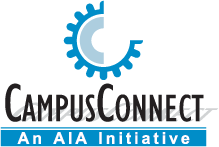
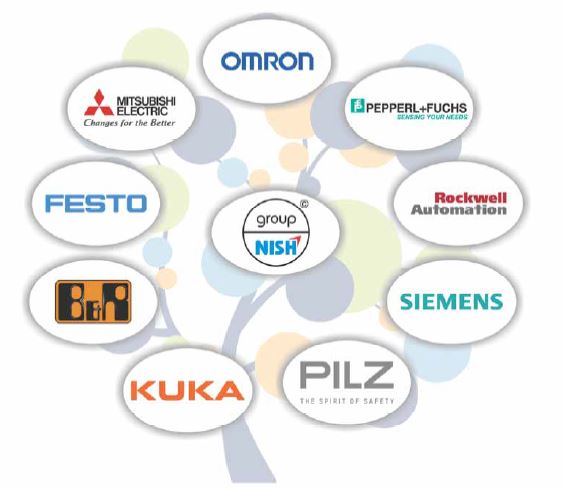
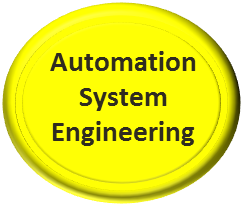
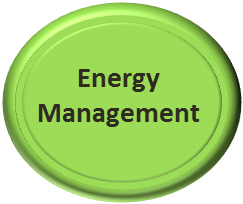
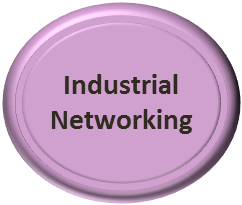



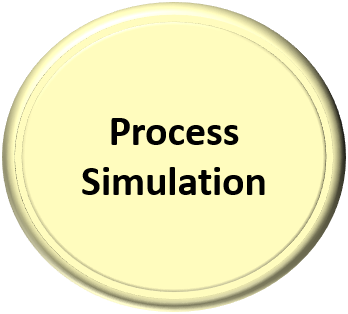




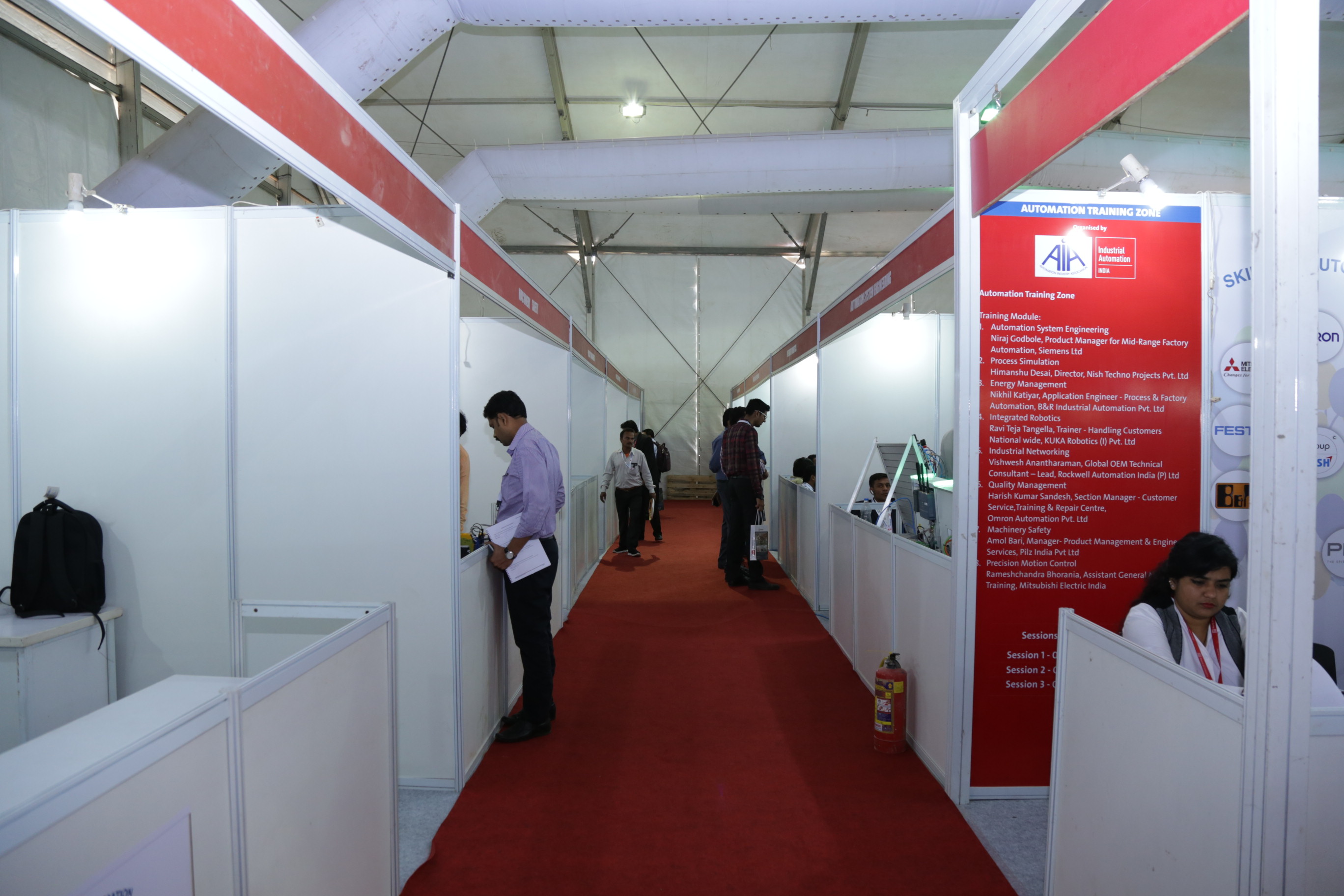


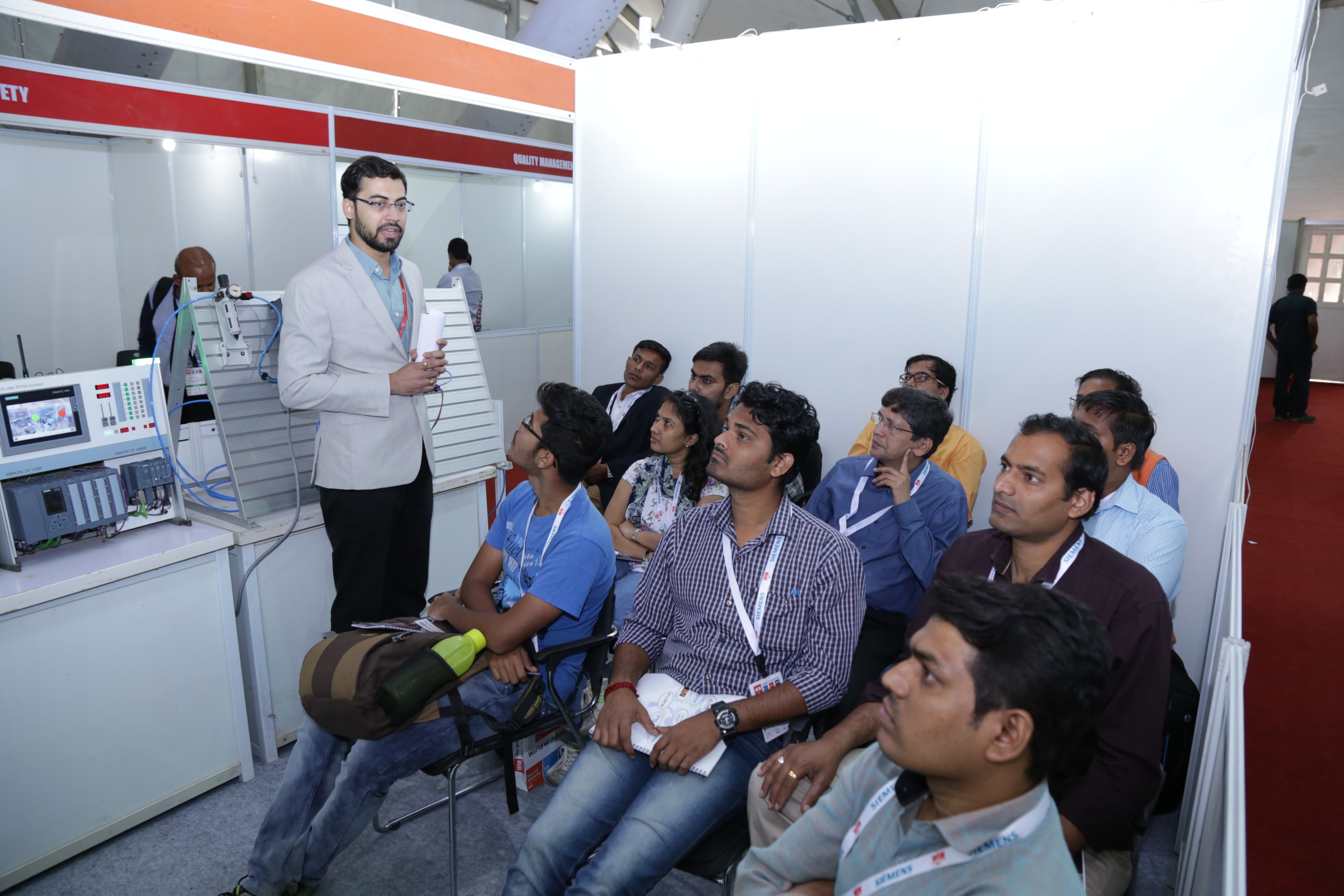
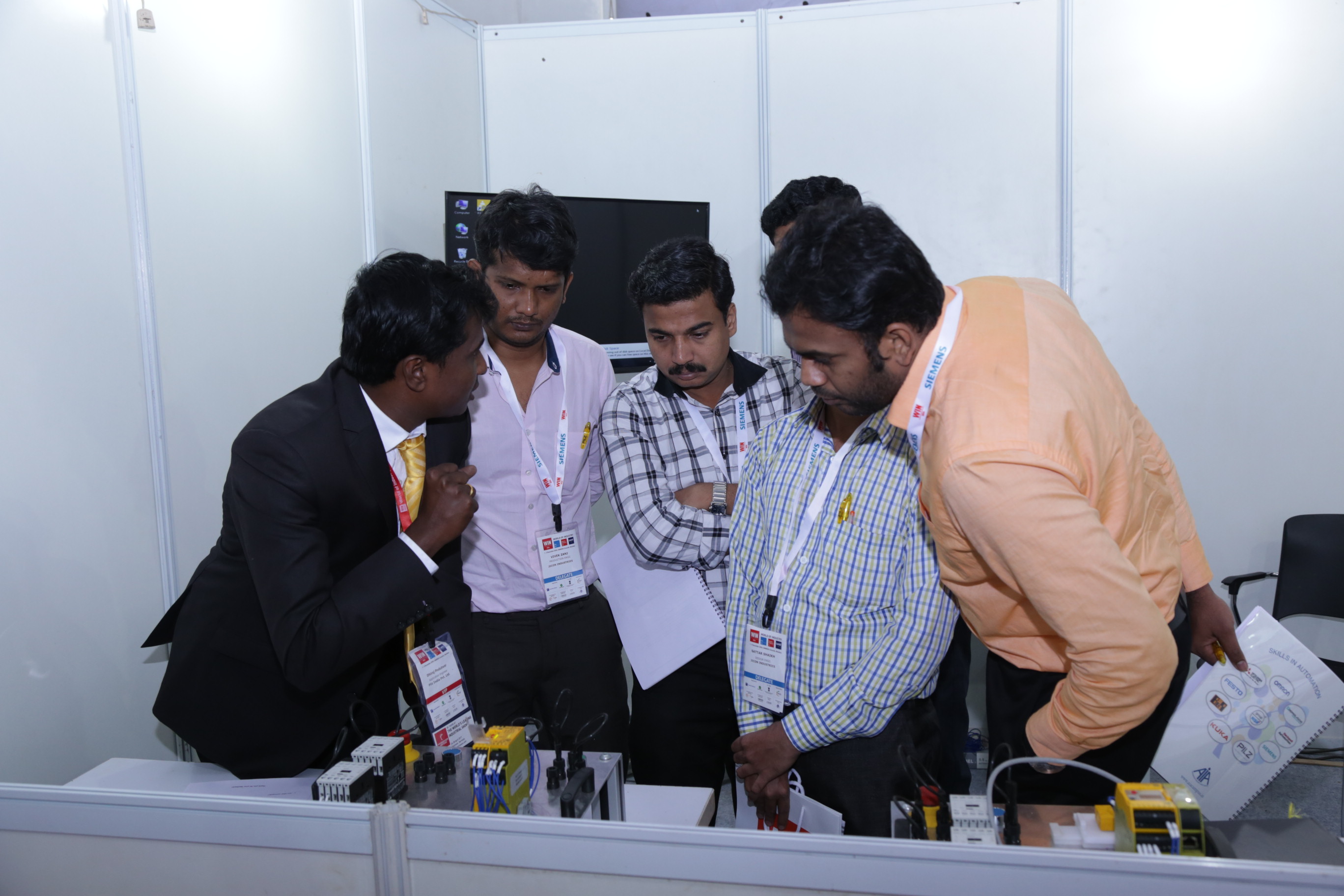

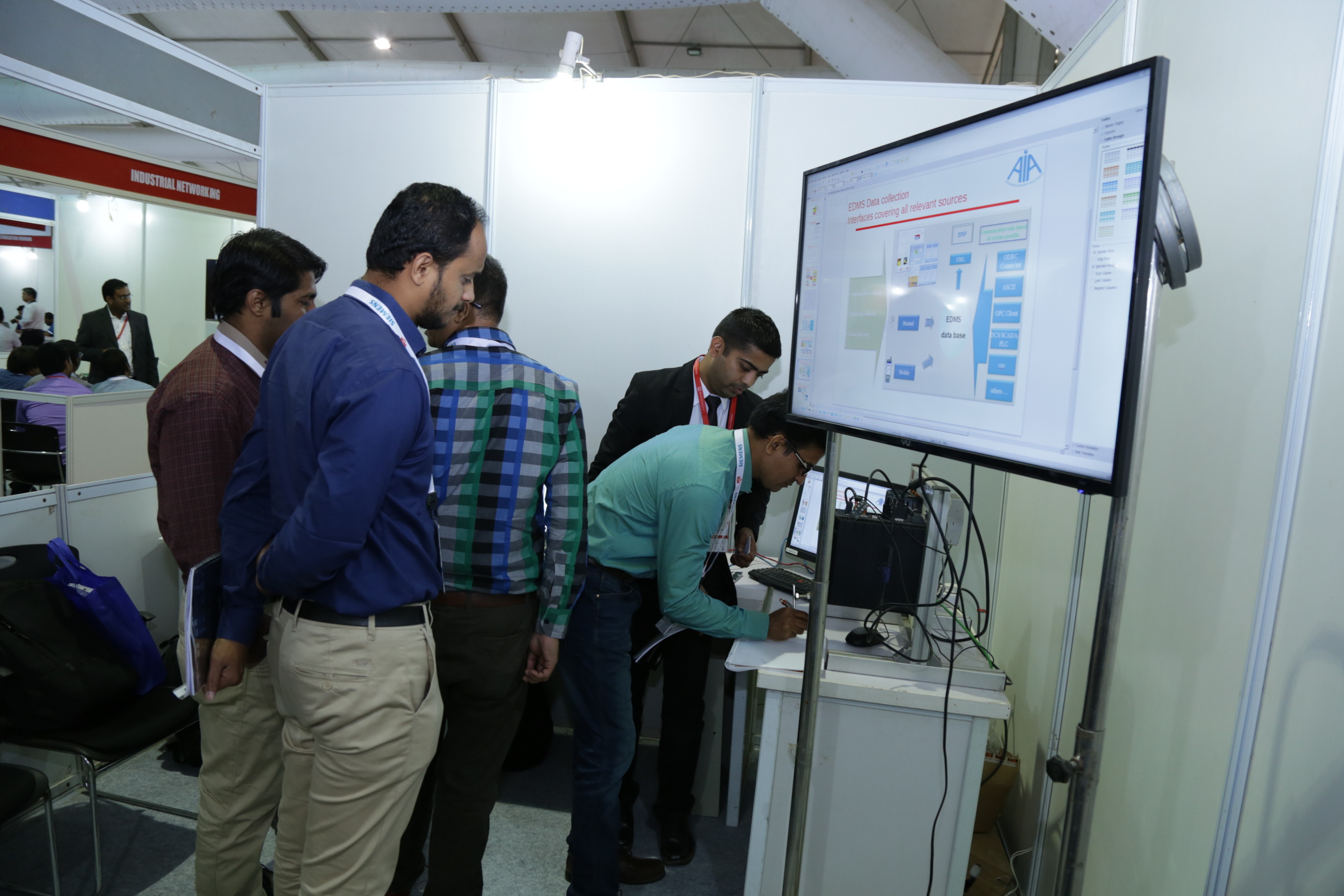
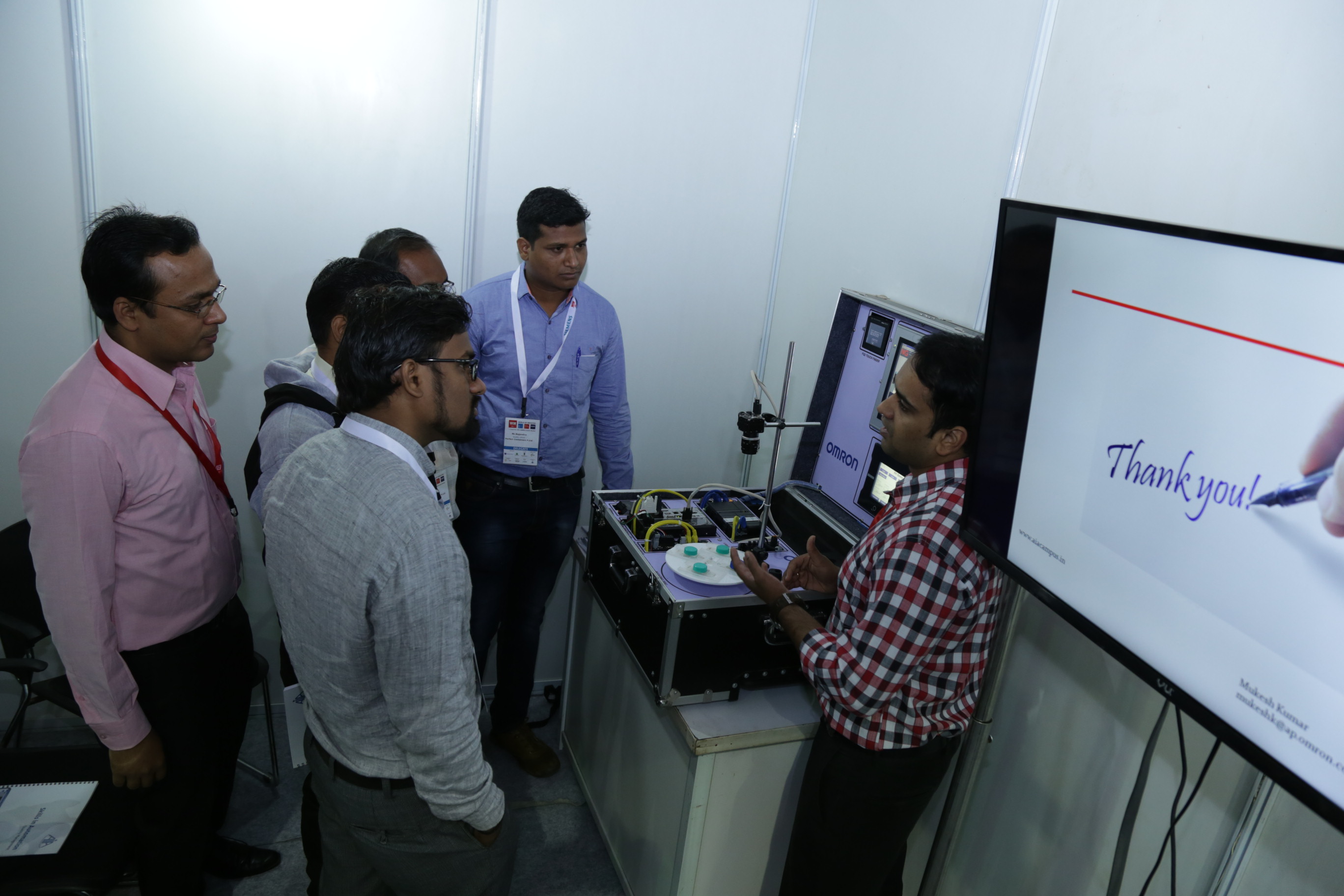
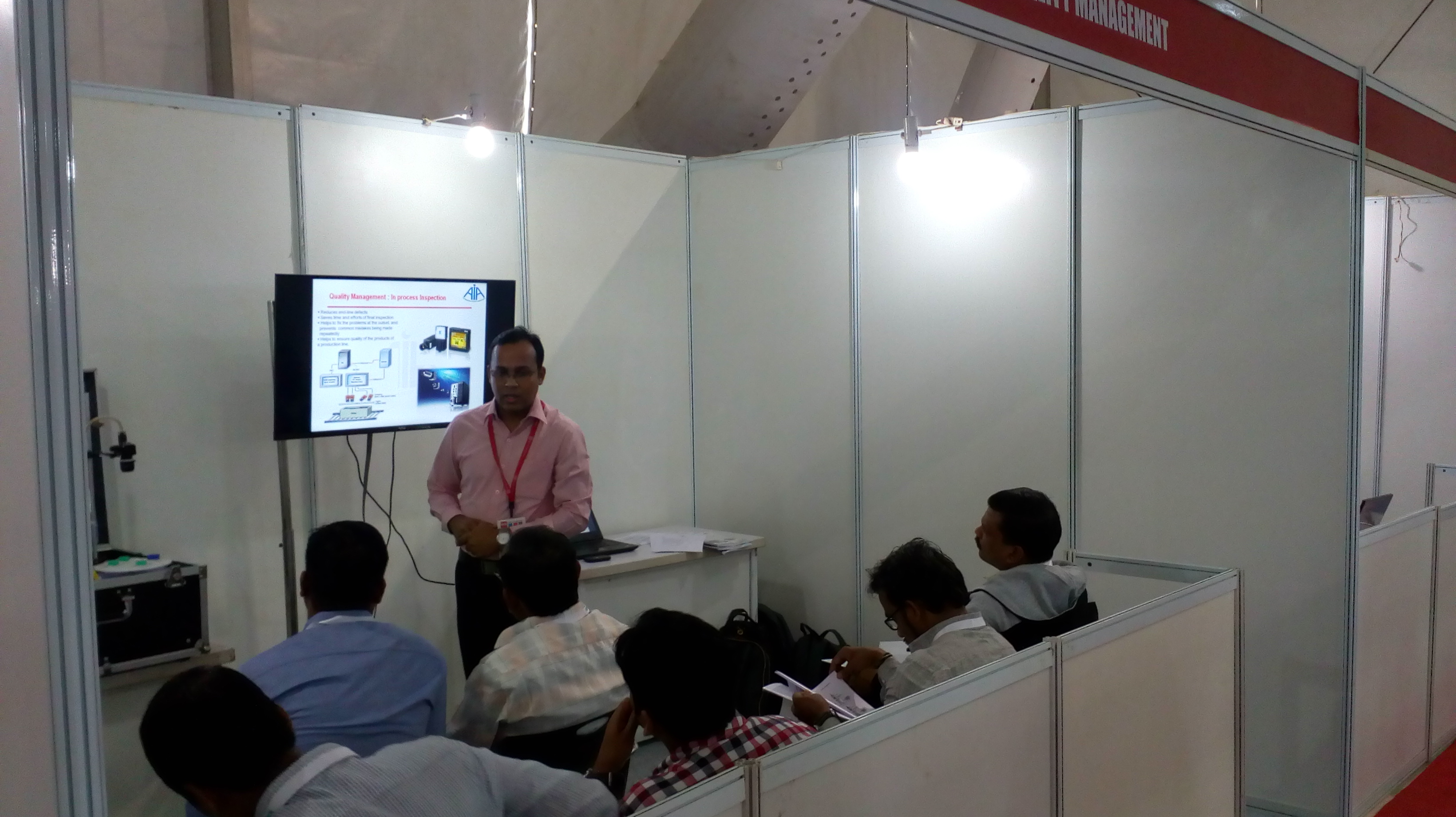

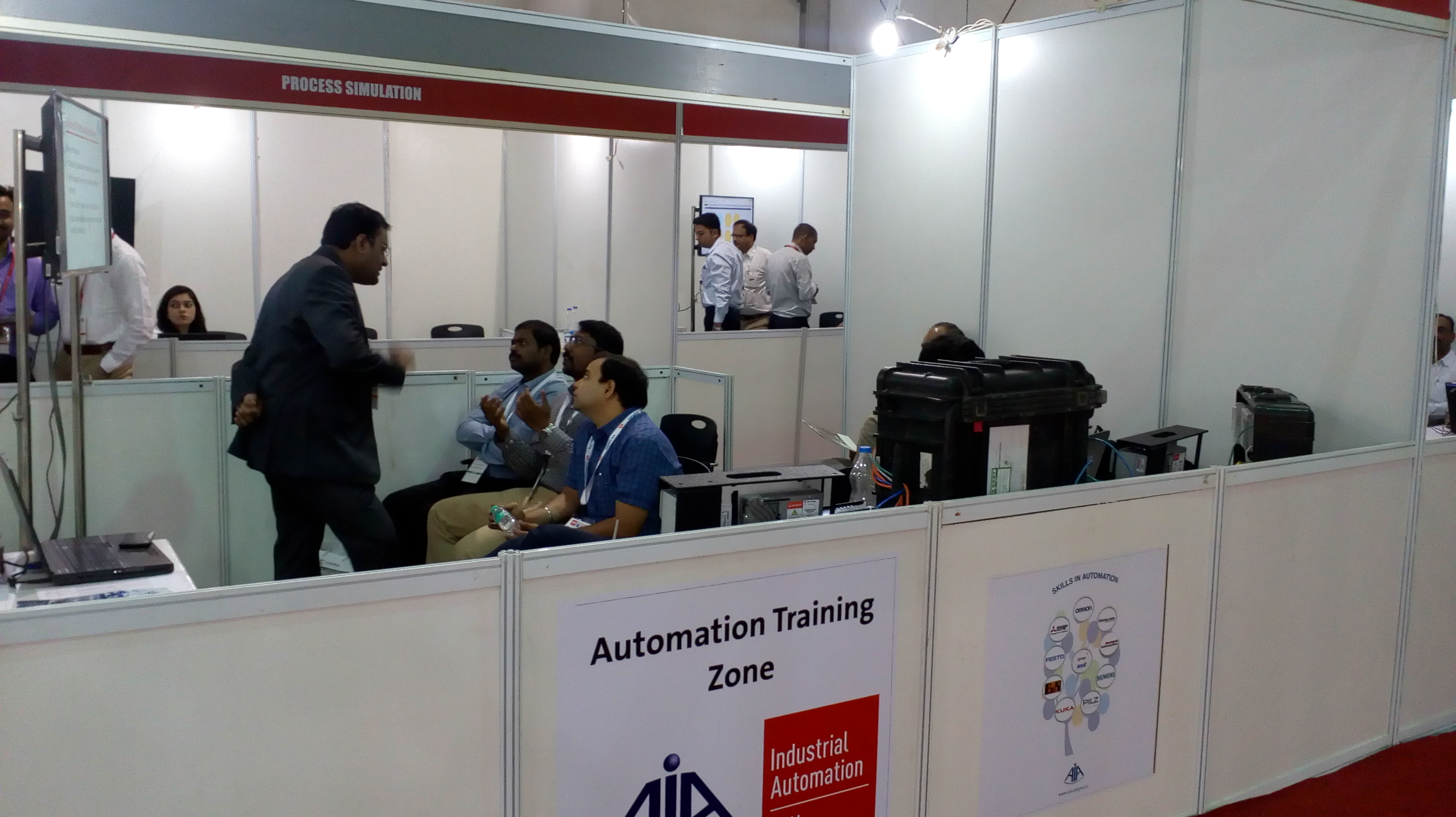
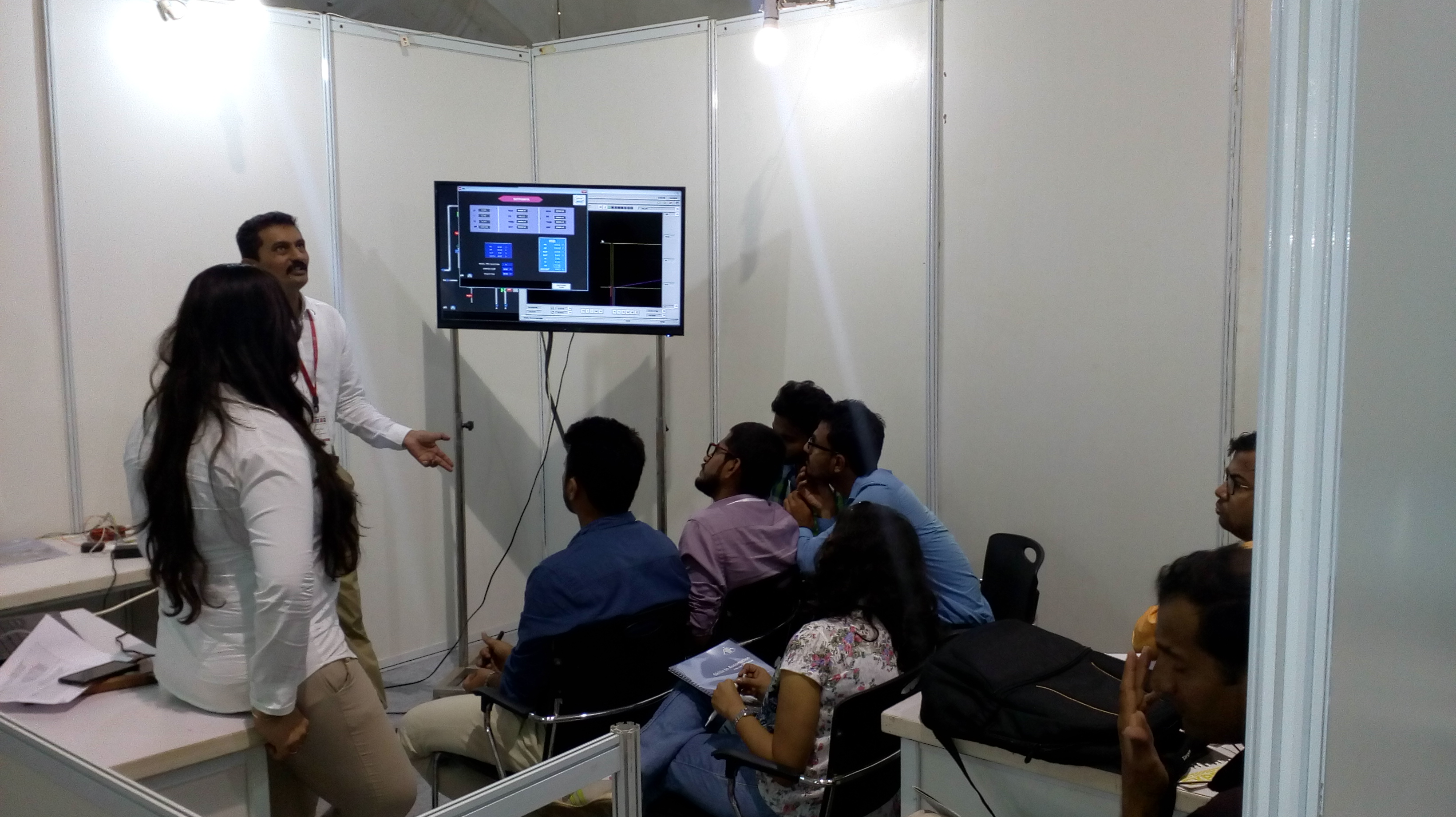





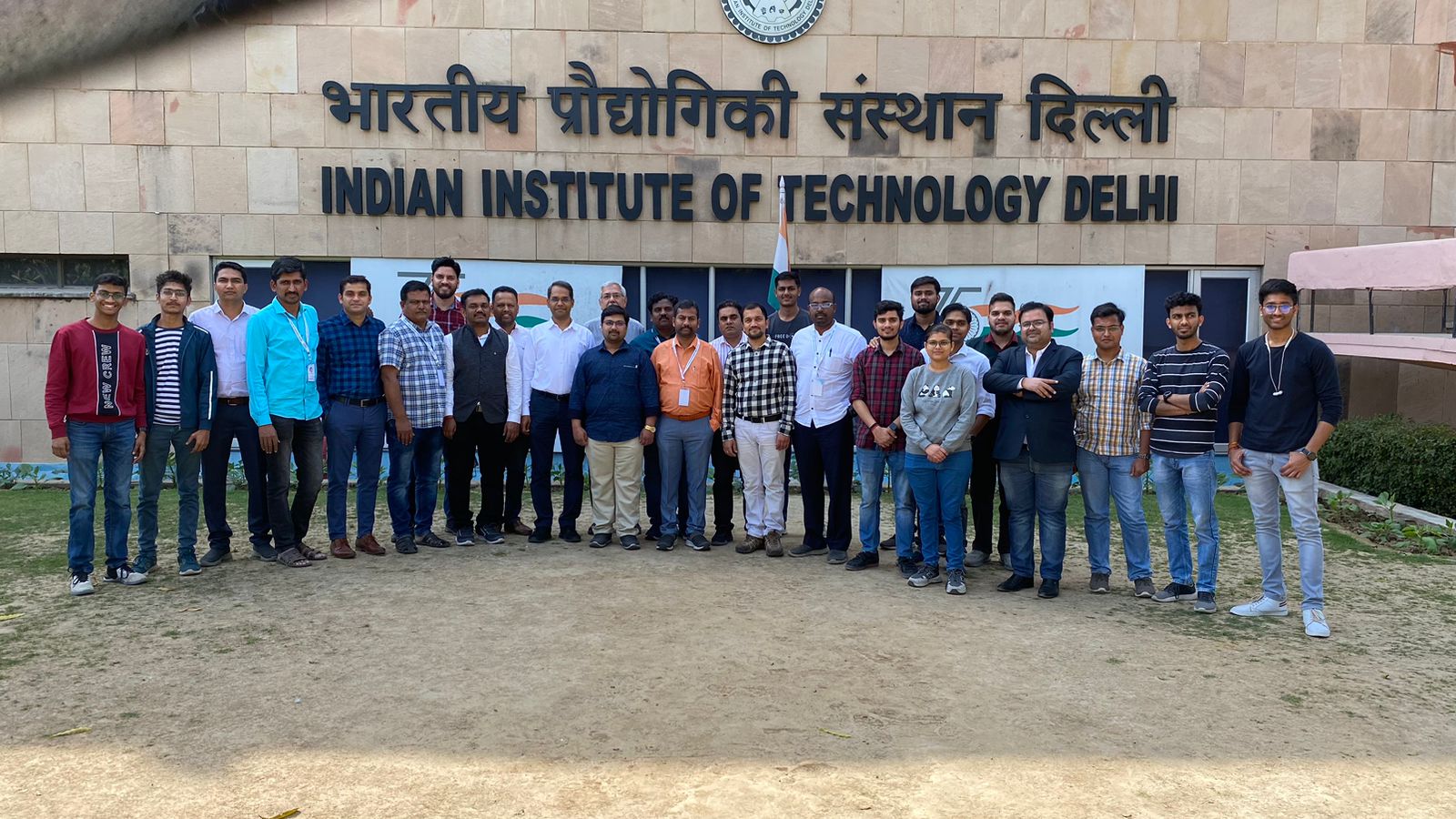 FSM Faculty & Trainees from HAL Bangalore at the IITD Hauz Khas Campus
FSM Faculty & Trainees from HAL Bangalore at the IITD Hauz Khas Campus